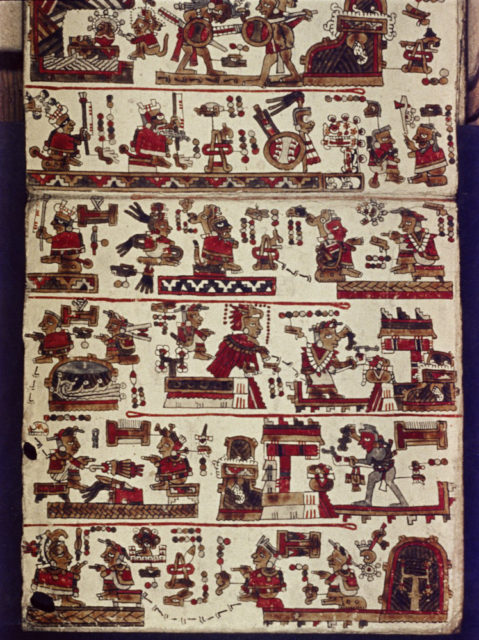Remaining hidden for nearly 500 years, a secret codex has been concealed by a layer of plaster, hiding details of a lost civilization that lived in Mexico long before the Spanish arrived.
With a new imaging technique, historians have for the first time been able to peer through the material on top to reveal a series of pictograms on the hide of a deer below.
Historians have been provided with a tantalizing glimpse of the history and culture of an early Mexican civilization known as the Mixtec.
The manuscript, known as the Codex Selden, dates from around 1560 and is one of fewer than 20 Mexican codices to have survived since before the pre-Columbian period.

However, experts have long suspected that the codex belonged to a much older document that had been covered up to give a new surface to writing on.
The 16ft long deer hide holds the document and was covered with gesso – a white plaster made from gypsum and chalk – before being folded into a 20-page manuscript.
During the 1950s, some of the plaster was scraped off to show a vague image on the deer hide underneath, but no more work has been able to show what lies under for fear of damaging it.
A team of researchers from Leiden University in the Netherlands is working with historians from the Bodleian Library at Oxford University, where the codex is kept. They claim to have found a way to see through the plaster and have published their findings in the Journal of Archaeological Sciences.

Hyperspectral imaging was the technique used to show the outlines of vivid pictograms on the original document.
Ludo Snijders, an archaeologist at Leiden University who led the work, said that: “We are now for the first time able to reveal, at least in part, the images of the palimpsest without damaging the object. What’s interesting is that the text we’ve found doesn’t match that of other early Mixtec manuscripts. The genealogy we see appears to be unique, which means it may prove invaluable for the interpretation of archaeological remains from southern Mexico.”
